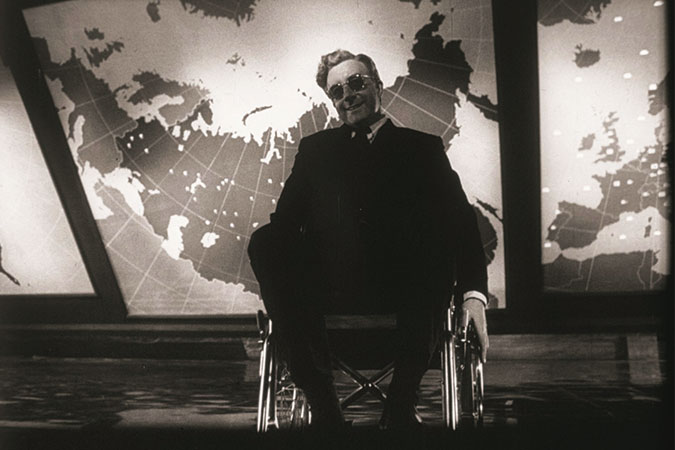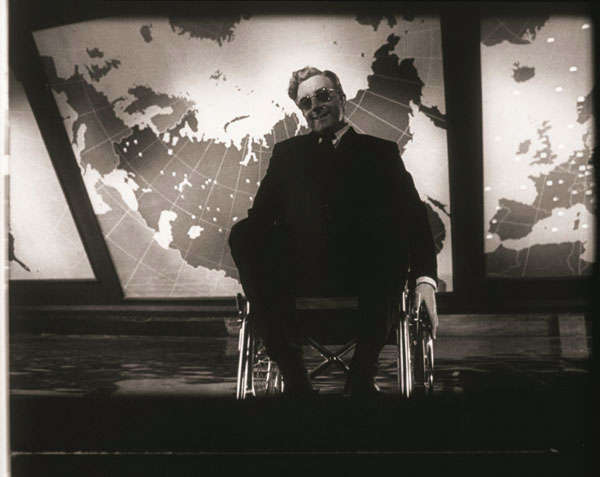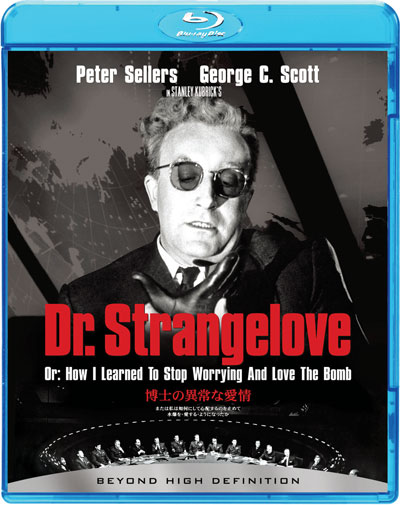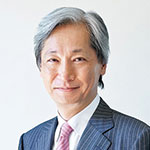Movie recommended by an International Politics professor Dr. Strangelove

We asked twelve University of Tokyo researchers working in a variety of fields to recommend a movie to us from the perspective of their own area of specialization. We hope these recommendations serve as a guide for your own movie-viewing, as well as pique your interest in each researcher’s academic endeavors.
Movie recommended by an International Politics professor
Dr. Strangelove

A darkly humorous take on the nuclear arms race between the US and the former Soviet Union
Discussions in the field of international politics tend to be rather abstract, and inevitably fail to pick up on every aspect of a situation. For example, despite all the discussion that took place during the War in Afghanistan, there was still so much that we didn’t know, such as what the American public thought of the conflict, or why they might assent to it. Recently, we’ve been witnessing the confrontation between the US and China and thinking about it in terms of what the Chinese government or the Xi Jinping administration is doing, but we remain ignorant of how the people who live in China see the world. When dealing with another country, it’s risky to make assumptions unless we’re acquainted with that country’s society, and this is an area that’s beyond the reach of international politics as an academic discipline. However, movies differ in that regard. Unlike formal discussion, they enable us to understand a society from a more detached perspective, thereby revealing it in a new light. I’ve always kept this in mind when watching movies.
So, what narratives has the US offered about its wars over the years? This has always been a key topic of interest for me. The archetypal weapons-oriented stories in the US would be Westerns, and in the era depicted by Stagecoach, for example, the nation was by no means pro-war. During the First World War, there was widespread doubt about whether the US ought to participate in a conflict taking place in Europe. The movie All Quiet on the Western Front was about young Germans dying on the battlefield. What it depicted was not Germany as the villain, but war as a tragedy that should be avoided.
Movies address areas beyond the reach of political science
That all changed with the Second World War. The Germans who appeared in Casablanca were obvious villains. Underlying this movie was the idea that the US employs war as a means to make the world safe and spread its preferred political system of democracy. This subsequently became the mainstream perception of war in the US, demonstrating that movies accurately reflect changes in the social consensus.

Movies fulfill another important function, and Dr. Strangelove provides a good example of this. It’s a masterpiece in which the director Stanley Kubrick, who was still in his thirties at the time, caustically satirizes the Cold War and the nuclear arms race between the US and the former Soviet Union.
An unhinged US general takes it upon himself to order a nuclear strike against the Soviet Union using a bomber. The president, who wants to avoid nuclear war, makes a phone call to the Premier of the Soviet Union immediately before the bombing, and the conversation between the two, which starts with trivial small talk, is extremely memorable; I can still recite it now. In the end, the bomber can’t be recalled, and the nuclear bomb is dropped...
The doctor with the unusual name of Strangelove, which gives the movie its title, is a German nuclear weapons expert who has taken American citizenship, and is reminiscent of Wernher von Braun, who helped develop the V-2 rocket. He uses a wheelchair and has a disability in his right hand, but as soon as he begins talking about the world after the nuclear bomb has dropped, he becomes animated, gives a Nazi salute and starts to walk. Finally, as the movie closes with horrifying yet beautiful images of nuclear mushroom clouds rising one after the other like fireworks, one hears the elegant strains of the jazz song “We’ll Meet Again.” It’s a closing scene full of black humor that remains an all-time classic of cinema.
Dr. Strangelove was made during the Cold War, when the possibility of nuclear conflict was of indisputable concern, and that anxiety is the premise underlying the movie. However, the director is viewing the situation from a slightly detached position. In this portrayal, there’s no sign whatsoever of a US that’s fighting a just war; it’s clear that the intent is to warn the US against doing something stupid. As detachment enables the movie’s creator to portray the subject matter in an original way, Dr. Strangelove is a cinematic work that reminds us how powerful movies can be.
| Also recommended A Touch of Sin Released in 2013; directed by Jia Zhangke. Depicts the stories of four criminals in wuxia-movie style to illustrate the frustrations of those who are repelled by society’s injustices but cannot express their repulsion. (This movie was not released in China.) The Outpost Released in 2020; directed by Rod Lurie. Depicts what was regarded as the War in Afghanistan’s harshest battle, between a US military outpost and the Taliban (based on a true story). Another example of a movie created from a slightly detached perspective. Capernaum Released in 2018; directed by Nadine Labaki. A 12-year-old Syrian refugee boy living in a slum rebels against his parents who are trying to sell his younger sister. He runs away and sues his parents. The lead role is played by a young Syrian refugee. |
* Professor Fujiwara’s affiliation and title are as of March 2022.
** This article was originally printed in Tansei 44 (Japanese language only). All information in this article is as of March 2022.



 Kiichi Fujiwara
Kiichi Fujiwara


